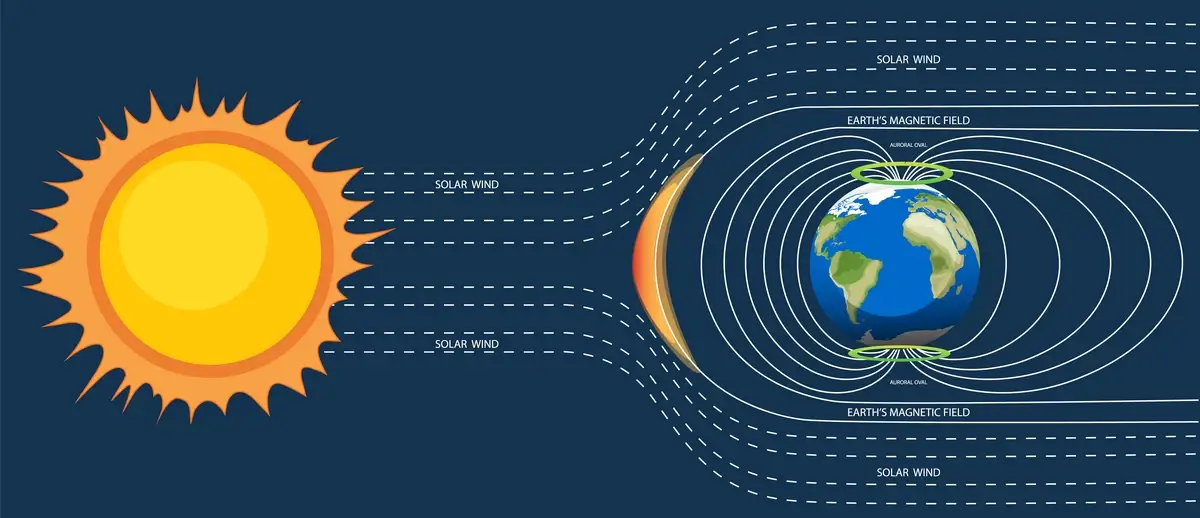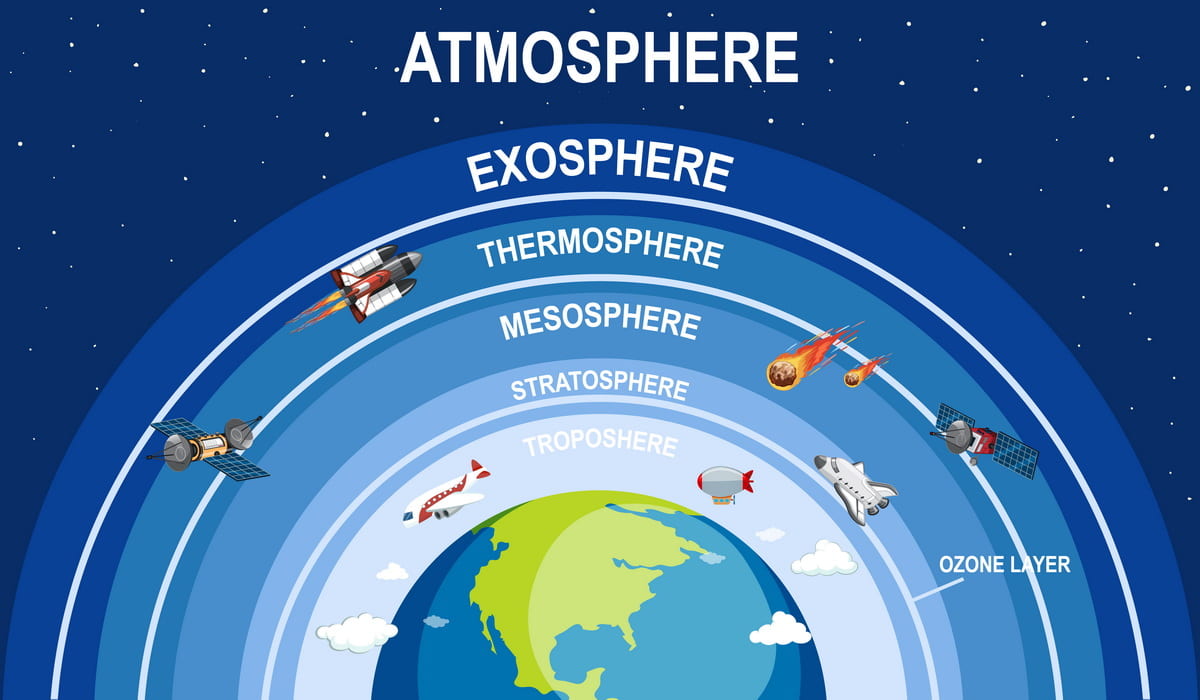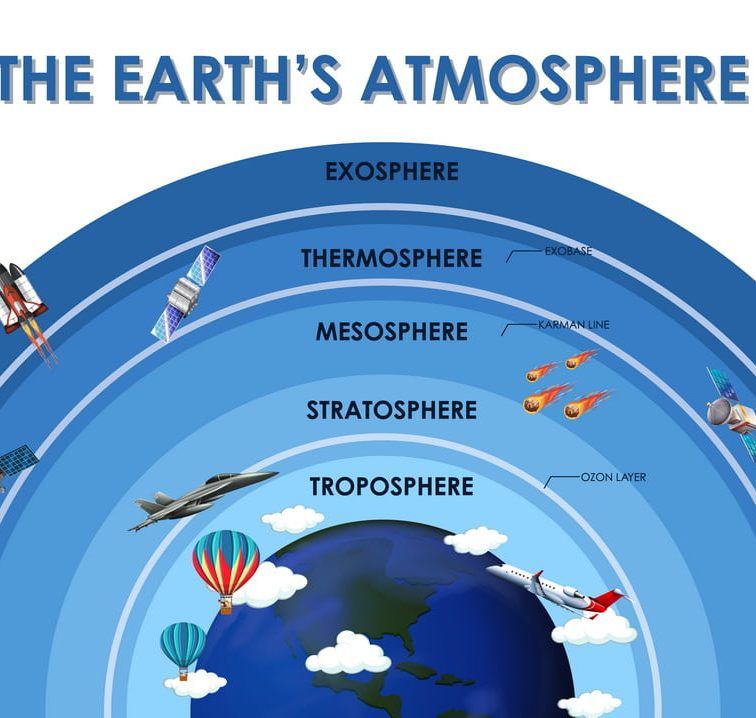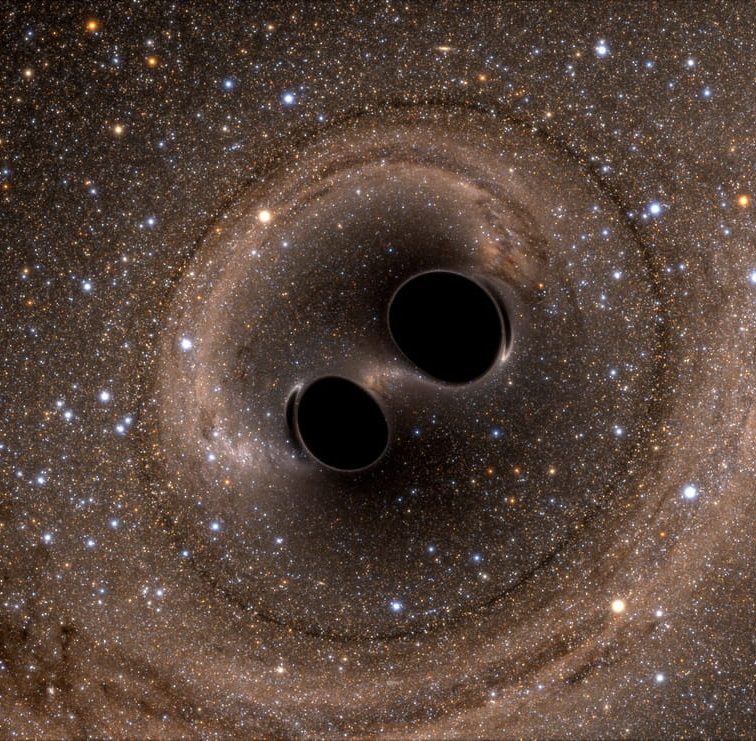Dive deep with us into fun facts about the exosphere! As you gaze up at the shimmering night sky, you might be curious about the vast expanses above. Before letting your imagination traverse galaxies, let’s zone in on Earth’s celestial shroud: the exosphere. Nestled miles above, this outermost layer is our planet’s last atmospheric embrace before the great void of space.
Ever considered that the International Space Station orbits within this realm? Or pondered the irony that despite being part of our atmosphere, the exosphere feels almost as empty as deep space? Sparked your curiosity? Let’s unravel the mysteries of this fascinating layer that hovers between our blue planet and the cosmic unknown.
1. Space Gateway: Where Earth Meets Outer Space
The exosphere: it’s where the atmosphere waves goodbye and outer space begins. Did you know that this outermost layer actually extends further than we once believed? Historical studies limited its range to a few hundred miles above Earth. However, recent NASA research suggests it reaches up to where the moon orbits, nearly a quarter-million miles away!
This discovery shakes up our definition of Earth’s atmospheric boundary. Our moon, it turns out, is technically flying through Earth’s atmosphere! An unexpected twist in our cosmic narrative, isn’t it?
2. Miles High Club: Exosphere’s Vast Altitude Range
Beginning roughly 500 miles above the Earth’s surface and stretching possibly as far as 190,000 miles, the exosphere is Earth’s outermost atmospheric layer, presenting a vast realm of wonder. While it’s significantly less dense than the layers beneath it, the exosphere holds a unique position as the gateway to interstellar space.
The exosphere isn’t just a buffer between us and the stars; it’s also where atoms and molecules escape into space, becoming free from Earth’s gravitational pull. This escape acts as a testament to the thinness of this layer, showcasing the delicate balance between our planet and the broader universe.
3. The Lone Hydrogen Club: Predominant Molecule of the Exosphere
It’s a hydrogen party up there! Unlike the troposphere, stratosphere, and mesosphere, where a mix of gases frolic, in the exosphere, hydrogen, the universe’s lightest and most abundant element, takes center stage. Why? Its light weight allows it to reach elevations other molecules can’t.
Scientists have deduced that at these high altitudes, collisions between molecules are infrequent, so hydrogen roams almost freely. This knowledge aids in studies regarding our planet’s water origin, as hydrogen is a vital piece of the puzzle.
4. The Magnetosphere’s Protective Embrace
While the exosphere is a realm of extreme conditions, it plays a role in the broader context of Earth’s magnetosphere. This region, dominated by our planet’s magnetic field, extends well into the exosphere. It acts as a protective shield, deflecting harmful charged particles from the Sun.
When these solar particles meet the magnetosphere’s boundary, many are deflected, while some spiral along the magnetic field lines, resulting in spectacular displays like the Northern and Southern lights. The exosphere’s positioning within this magnetosphere ensures it remains a dynamic and vital layer in the complex system that protects our planet from solar radiation.

Image by brgfx / Freepik
5. NASA’s Tryst: Why NASA Studies the Exosphere
NASA isn’t just about moon landings and Mars rovers. Much of their attention, believe it or not, is directed at our very own exosphere. But why this fascination? The exosphere holds answers to questions about Earth’s hydrogen distribution, atmospheric escape, and even our planet’s geological history.
Every satellite launch, space probe, or science mission initiated by NASA is informed by their understanding of the exosphere. Its unique conditions are not just a scientific curiosity but a necessity for successful space expeditions.
6. More Vacuum than Gas: An Almost Empty Layer
You might think of the exosphere as a gassy domain, but it’s more of a spacey place. How so? Well, molecules here are so spread out that it’s akin to a vacuum, making it a realm where space and atmosphere shake hands. Think about this: if you were to capture a chunk of the exosphere, you’d find fewer particles in it than in any man-made vacuum on Earth!
This surprising fact underscores the exosphere’s unique position: it’s part of our atmosphere, yet it exhibits characteristics of deep space.
7. The Slow Escape: Molecules Leaving Earth
Our planet has been saying a slow goodbye to some of its molecules, especially hydrogen. In the exosphere, these molecules gain enough energy to escape Earth’s gravitational pull and drift into outer space. This process, termed “atmospheric escape,” is crucial in understanding planetary atmospheres and the potential for life on other worlds.
However, fear not! The loss is so minuscule that Earth’s atmosphere isn’t disappearing anytime soon. But the fact that our planet has a subtle, continual interaction with the cosmos is nothing short of fascinating.
8. Lunar Revelations: The Exosphere’s Role in Moon Missions
Beyond our planet’s confines, the Moon, our celestial neighbor, beckons with mysteries and scientific treasures. When planning lunar missions, understanding the Earth’s exosphere is crucial. The Earth’s exosphere, with its low density, offers insights into how similar layers might behave on other celestial bodies, including the Moon.
Studying our exosphere gives scientists a comparative model when examining the Moon’s thin atmosphere (or “exosphere”). These insights are invaluable for future missions, be it for research, exploration, or potential colonization. The exosphere, thus, isn’t just our outer shield; it’s a stepping stone to understanding more distant realms.
9. Journey of Layers: From Troposphere to Exosphere
From ground level to the cusp of space, Earth’s atmosphere is a tiered cake of layers, starting with the troposphere and culminating in the exosphere. As we ascend, the stratosphere awaits above the troposphere, followed by the mesosphere, then the sizzling thermosphere, and finally, our star layer, the exosphere.
Each layer has its unique flavor (metaphorically speaking) and purpose. But it’s the exosphere that gets the bragging rights for touching the infinite expanses of outer space. Talk about a journey of highs (literally)!
10. Extreme Temps: Hotter than Your Oven, Seriously!
Don’t let space’s cold reputation fool you. When it comes to the exosphere, things get fiery. Despite its low density, the exosphere can reach temperatures up to 2,500°F (1,370°C)! In comparison, your home oven maxes out at about 500°F (260°C). The reason? Molecules, albeit scarce, in the exosphere absorb high-energy solar radiation, causing this intense heat.
But here’s an interesting fact: if you were somehow (magic, maybe?) in the exosphere, you wouldn’t feel this heat due to the lack of enough molecules to transfer it to you.
11. The Invisible Layer: You Can’t See the Exosphere from Earth’s Surface
Looking up on a clear day, you might think you’re seeing the entirety of our atmosphere. Think again! The exosphere is the shy guy of the atmospheric party. Due to its minimal density and molecules being so far apart, it’s virtually invisible from the Earth’s surface.
This fun fact adds a dash of mystery to our daily lives: above us is a realm that plays a vital role in our planet’s interactions with space, yet remains hidden from our eyes.

Image source: wallpapers.com
12. Misplaced Definition: Science’s Struggle to Define Its Boundary
Here’s a surprising fact: defining the exosphere’s boundary is like trying to pin the tail on the donkey while blindfolded! While we know it’s our atmosphere’s outermost layer, the exact point where it kisses outer space has eluded a firm definition. This is primarily due to its thinness, and the gradual transition of molecules fading into the void of space.
Science is precise about many things, but when it comes to the exosphere’s ending (or beginning, depending on your view), there’s room for a tad bit of mystery.
13. Moon Connection: Exosphere Beyond Earth
Now, hold onto your space helmets! Earth isn’t the only celestial body boasting an exosphere. Our very own Moon, devoid of a traditional atmosphere, has a tenuous exosphere of its own. Composed mainly of hydrogen, neon, and other trace elements, it’s evidence that the exosphere is not an Earth-exclusive phenomenon.
It’s a cosmic reminder: while Earth and Moon seem worlds apart in many aspects, they share this thin, ethereal connection high up in the space realm.

Brett Sayles / Pexels
14. Helium’s Hideout: A Noble Gas Playground
We’ve touched upon hydrogen dominating the exosphere, but let’s not forget about helium, the second most prevalent gas up there. Helium, an inert noble gas, has atoms that can reach the exosphere thanks to their lightness and Earth’s thermal activities.
Once in the exosphere, these helium atoms can linger for a while before either being pulled back by gravity or escaping into space. So, beyond floating balloons and squeaky voices, helium has its own elevated playground!
15. Earth’s Radiant Halo: The Exosphere’s Luminous Display
Under specific conditions, the exosphere can create a faint, luminescent halo around Earth. This isn’t your typical aurora. Instead, this glow is thanks to scattered sunlight and the sparse molecules and atoms in the exosphere, producing a weak but enchanting illumination.
Imagine Earth as a celestial entity wearing a faint tiara of light. A silent spectacle, reminding us of the beauty that exists in even the sparsest places.
16. Molecular Freedom: Every Molecule for Itself!
In the world of the exosphere, it’s every molecule’s solo journey. Due to the expanse’s extremely low density, molecules rarely collide with each other, experiencing a sense of unparalleled freedom. In comparison, down on the Earth’s surface, molecules are in a constant, chaotic dance, bouncing around with their neighbors.
Imagine being in a vast, open field all alone, with no one for miles. That’s the life of an exospheric molecule—a true testament to independence in the vastness of space.
17. The Exosphere’s Silent Symphony: Listening to Space Weather
One of the compelling reasons scientists study the exosphere is its response to space weather events, particularly solar storms. When charged particles from the sun, known as the solar wind, hit our planet, the exosphere can resonate like a bell.
By studying these resonances, scientists gain insights into solar-terrestrial interactions and the dynamic forces at play in our cosmic neighborhood.
18. Eternal Sunbathing: Constant Exposure to Sunlight
If you’re a fan of sunbathing, the exosphere is the ultimate tanning bed (hypothetically, of course!). Positioned high above, it’s in constant exposure to the Sun’s rays, unlike other atmospheric layers that experience night and day. But this isn’t your regular sunshine; it’s a barrage of intense solar radiation, unfiltered by the layers below.
While this might sound like a sunburn nightmare for us, for the exosphere, it’s just another regular day (or eternal day) at the office.

Image source: worldatlas.com
19. Density Dilemma: Less Dense than the Best Vacuum Chambers
The exosphere throws a curveball in the density game. It’s so sparse that even the world’s most advanced vacuum chambers on Earth struggle to replicate its low density. In this near-empty realm, molecules are incredibly far apart, making it one of the most vacuum-like regions naturally occurring in our vicinity.
It’s almost ironic: while scientists work hard to create near-perfect vacuums on Earth, nature has already crafted an even better one, miles above our heads!
20. The Historical View: How Ancient Cultures Imagined the Exosphere
Long before we had rockets and satellites to probe the mysteries of the exosphere, ancient civilizations gazed up, creating myths and stories about this outermost layer. For them, the vast expanse above was the realm of gods, spirits, and celestial beings. Without the benefits of modern science, they attributed this distant, serene space to divine or otherworldly influences.
It’s a humbling thought: today’s factual understanding was once the stuff of legends and folklore. From divine playgrounds to scientific frontiers, the exosphere has always captivated human imagination.
FAQ
What 4 things are in the exosphere?
The exosphere is primarily comprised of hydrogen and helium, which are the lightest elements. You’ll also find traces of heavier gases such as carbon dioxide and atomic oxygen. Apart from these gases, the exosphere hosts several of Earth’s satellites, including the International Space Station.
What does the exosphere do?
The exosphere serves as the boundary between Earth’s atmosphere and outer space. It acts as a filter where lighter gases like hydrogen and helium can escape into space, while the heavier molecules remain closer to Earth. Additionally, the exosphere serves as a transitional zone for Earth’s magnetic and electric phenomena.
What special occurs in the exosphere?
One notable phenomenon in the exosphere is the “geocorona,” a luminescent halo around Earth where hydrogen atoms scatter sunlight. This layer is also where many of our satellites orbit, safely distanced from the more densely packed layers of the atmosphere below.
Is the exosphere hot or cold?
The exosphere is incredibly hot, with temperatures reaching up to 2,500°C (4,532°F). However, because of the exosphere’s extremely low density, one wouldn’t feel this heat. The sparse molecules mean there’s minimal heat transfer, so it wouldn’t “feel” hot as we understand it on Earth.
Is the Moon in the exosphere?
Yes, it is! Recent observations have revealed that Earth’s exosphere extends way beyond our Moon. This means that the Moon orbits within this atmospheric layer, specifically within Earth’s extended exospheric region.
How thick is the exosphere?
The exosphere begins around 500 km (310 miles) above Earth’s surface and extends thousands of kilometers into space. Due to its tenuous nature, the exosphere doesn’t have a precise “thickness” as it gradually fades into space without a clear boundary.
Who discovered exosphere?
The idea of various atmospheric layers, including the exosphere, has been refined over centuries. The term and the concept of the exosphere were developed in the mid-20th century as scientists acquired more knowledge about Earth’s atmosphere through advancements in space exploration and technology.
How does the exosphere protect us?
The exosphere itself doesn’t directly protect Earth’s surface or its inhabitants. However, it serves as a transitional layer where certain lighter gases escape into space. Satellites and space stations operate within the exosphere, free from atmospheric drag.
Why is the exosphere dark?
The exosphere is dark primarily because of its low density. With very few particles to scatter or reflect sunlight, the exosphere doesn’t have the ability to produce or amplify light, making it appear dark from a distance.
Is the exosphere radioactive?
The exosphere is not inherently radioactive. However, it is exposed to cosmic rays and solar radiation. These high-energy particles from space can interact with atoms in the exosphere, sometimes producing secondary particles with radioactive properties. But this radioactivity is not a characteristic feature of the exosphere itself.













